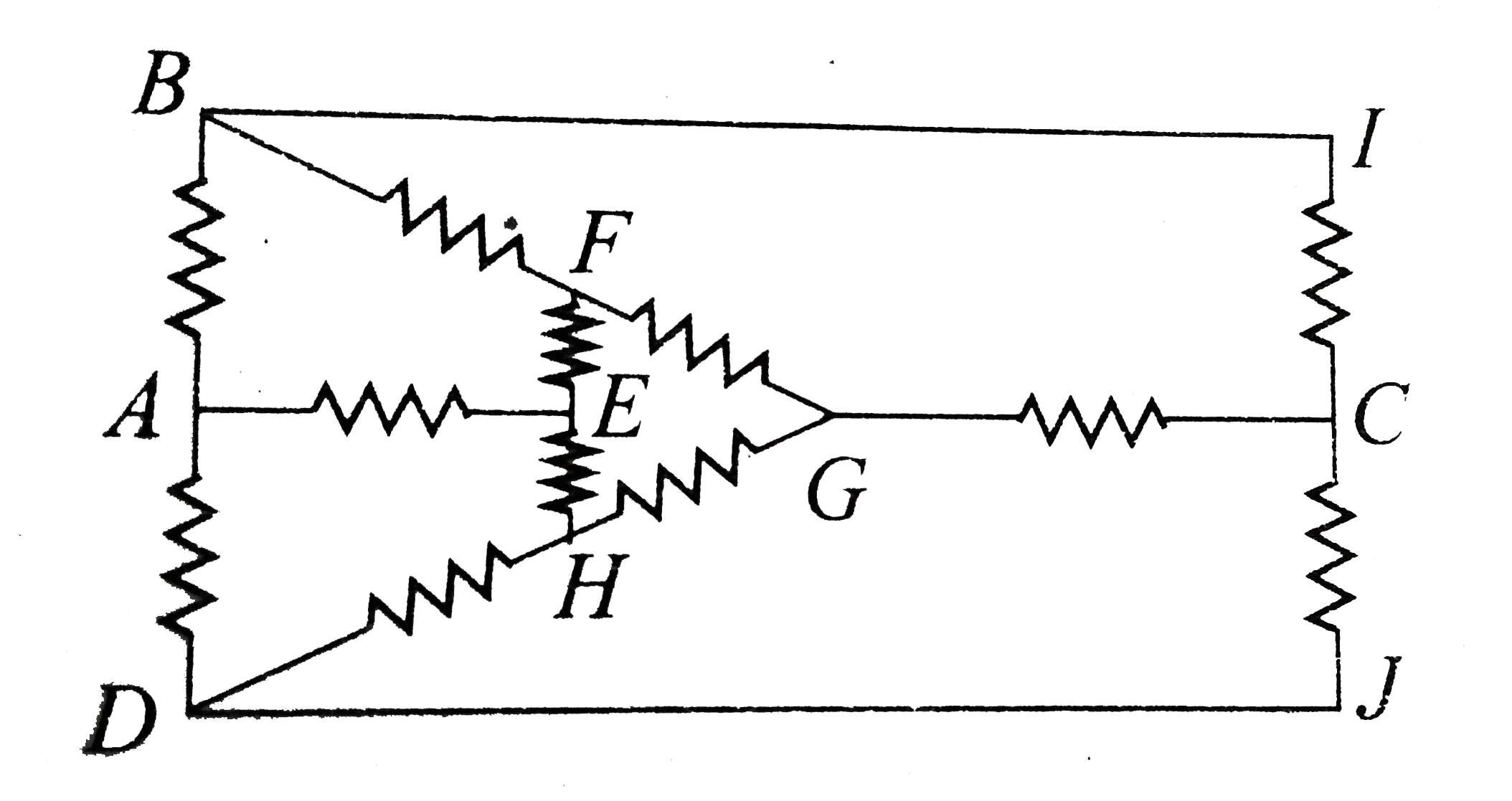If each resistance r is along the 12 edges of a cubical skeleton of uniform wires then find the equivalent resistance between X and Y where X and Y are the midpoints of two opposite edges of a face of the cube.
7r8
r2
4r5
7r5
The correct Answer is:A
To find the equivalent resistance between points X and Y, which are the midpoints of two opposite edges of a face of a cube made of uniform resistors, we can follow these steps:
Step 1: Understand the Configuration
We have a cube with resistors along each of its 12 edges. Points X and Y are located at the midpoints of two opposite edges of one face of the cube.
Step 2: Identify Symmetry
Due to the symmetry of the cube, the current entering point X will split equally into two paths towards point Y. This symmetry allows us to simplify the circuit.
Step 3: Simplify the Circuit
When we analyze the circuit, we can see that:
- The resistors connected to points X and Y can be grouped based on their symmetry.
- The resistors connecting the midpoints of the edges can be treated as being in parallel.
Step 4: Analyze the Resistor Configuration
1. The two resistors from X to the midpoints of the edges adjacent to X are each R/2 (since they are half of the edge resistors).
2. The resistor directly connecting these two midpoints (the edge between them) has a resistance of R.
3. The same configuration exists on the opposite side of the cube.
Step 5: Calculate Equivalent Resistance
1. The two resistors R/2 and R are in series, giving a total resistance of:
Rs=R/2+R=3R2
2. The two branches (one above and one below) are in parallel. The equivalent resistance Req of two identical resistances Rs in parallel is given by:
1Req=1Rs+1Rs=2Rs
Thus:
Req=Rs2=3R/22=3R4
Step 6: Final Calculation
Now, we need to consider the additional resistors from the midpoints to Y:
1. The two resistors R/2 from the midpoints to Y are also in series with the equivalent resistance calculated above.
2. Thus, the total equivalent resistance between X and Y is:
Rfinal=3R4+R2=3R4+2R4=5R4
Step 7: Combine the Results
The final equivalent resistance between points X and Y is:
Req=7R8
Conclusion
The equivalent resistance between points X and Y is 7R8.
---
We have a cube with resistors along each of its 12 edges. Points X and Y are located at the midpoints of two opposite edges of one face of the cube.
Due to the symmetry of the cube, the current entering point X will split equally into two paths towards point Y. This symmetry allows us to simplify the circuit.
When we analyze the circuit, we can see that:
- The resistors connected to points X and Y can be grouped based on their symmetry.
- The resistors connecting the midpoints of the edges can be treated as being in parallel.
1. The two resistors from X to the midpoints of the edges adjacent to X are each R/2 (since they are half of the edge resistors).
2. The resistor directly connecting these two midpoints (the edge between them) has a resistance of R.
3. The same configuration exists on the opposite side of the cube.
1. The two resistors R/2 and R are in series, giving a total resistance of:
Rs=R/2+R=3R2
2. The two branches (one above and one below) are in parallel. The equivalent resistance Req of two identical resistances Rs in parallel is given by:
1Req=1Rs+1Rs=2Rs
Thus:
Req=Rs2=3R/22=3R4
Now, we need to consider the additional resistors from the midpoints to Y:
1. The two resistors R/2 from the midpoints to Y are also in series with the equivalent resistance calculated above.
2. Thus, the total equivalent resistance between X and Y is:
Rfinal=3R4+R2=3R4+2R4=5R4
The final equivalent resistance between points X and Y is:
Req=7R8
The equivalent resistance between points X and Y is 7R8.
Similar Questions
Knowledge Check
- Question 1 - Select One or More
Which of the following combinations have the same equivalent resistance between X and Y ?
A B
B C
C D
D
In the given circuit, if resistance of each resistor is R:
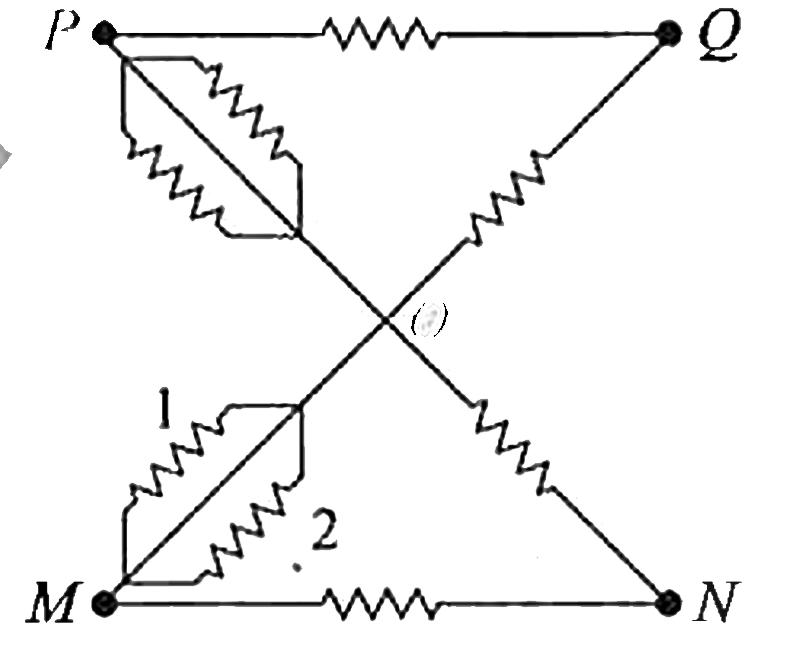
Find the equivalent resistance between M and N,View SolutionFind the equivalent resistance between terminals A and B. Each resistor is of resistance R.
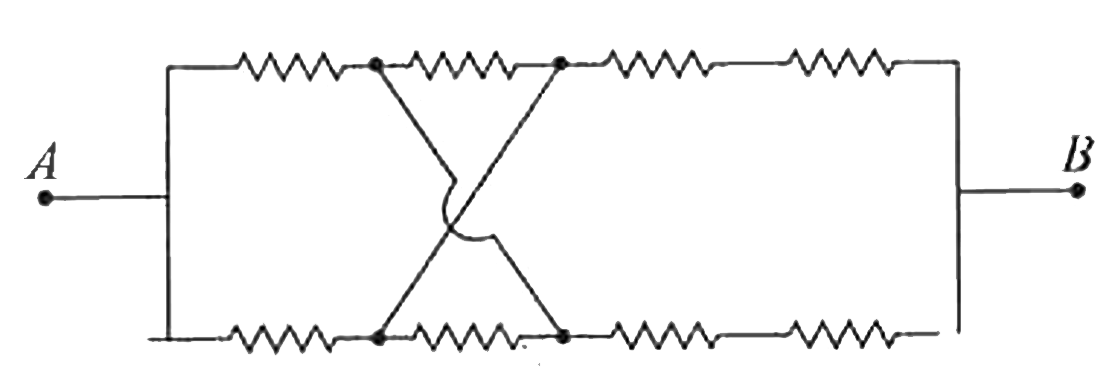 View Solution
View SolutionEach of the resistor shown in fig. has resistance R. Find the equivalent resistance between A and B
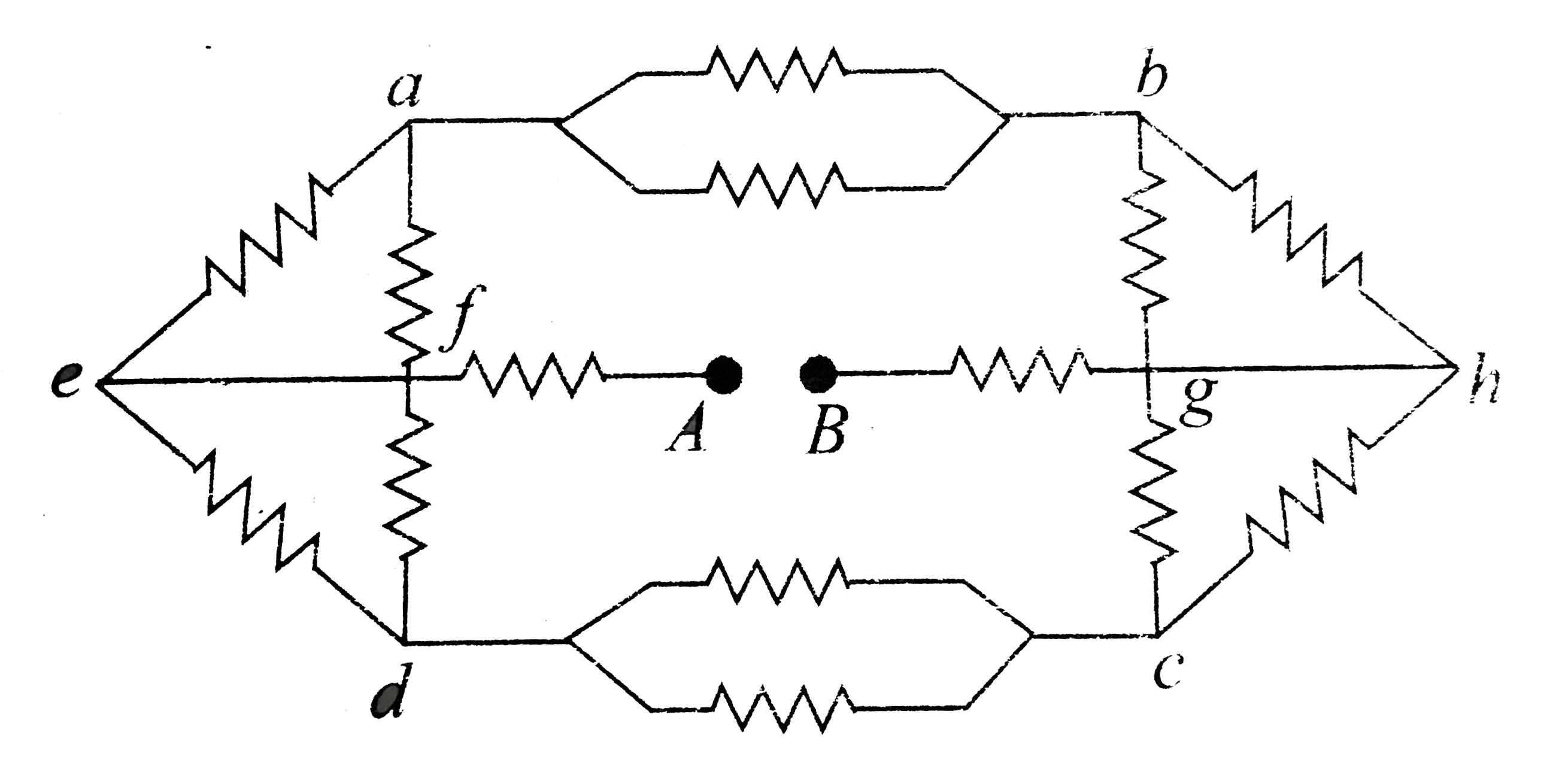 View Solution
View SolutionThe equivalent resistance between the point X and Y in the following circuit diagram will be
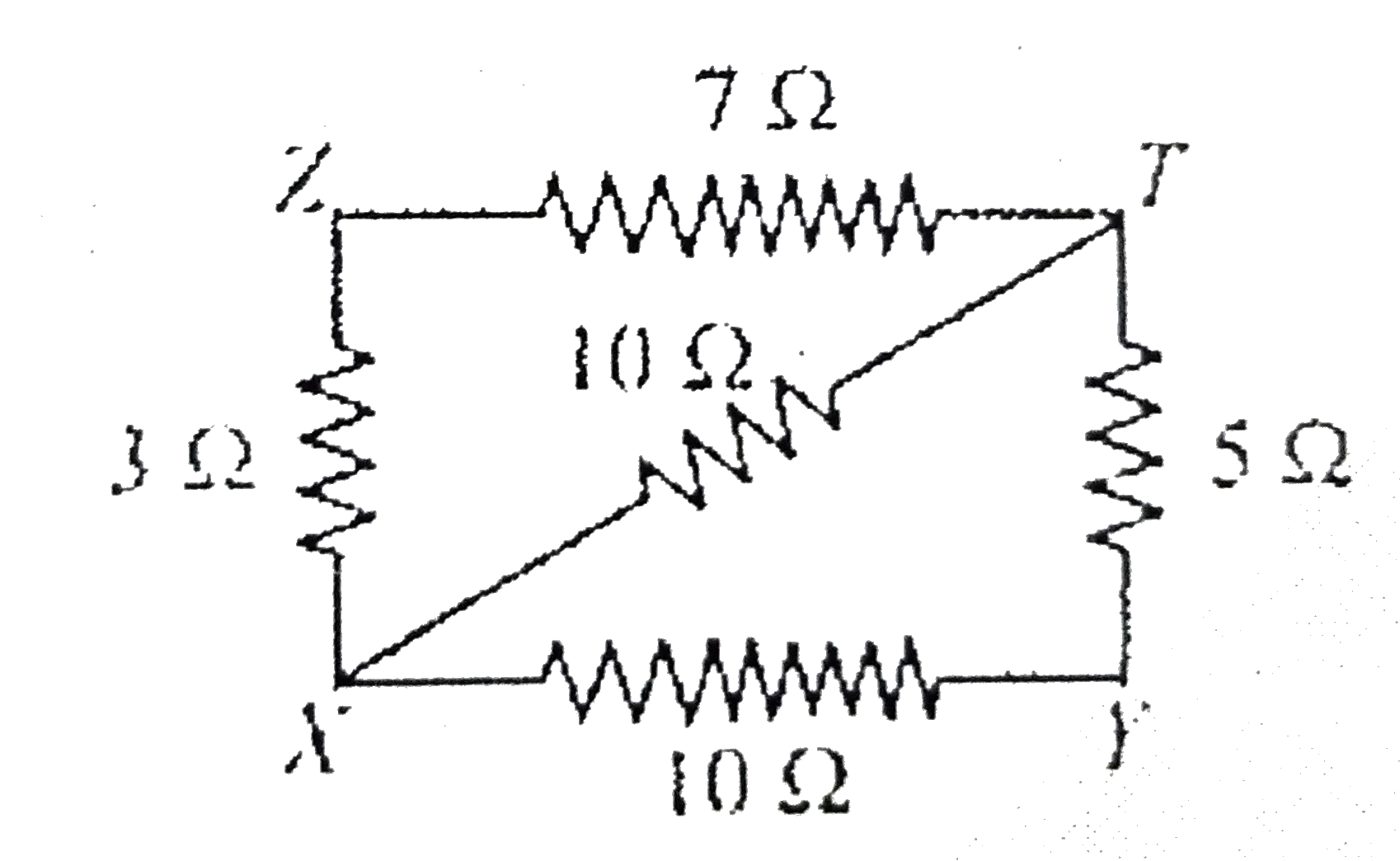 View Solution
View SolutionTwelve identical resistances arranged on all edges of a cube. The resisors are all the same. Then find the equivalent resistance between the edges A and B as shown in.
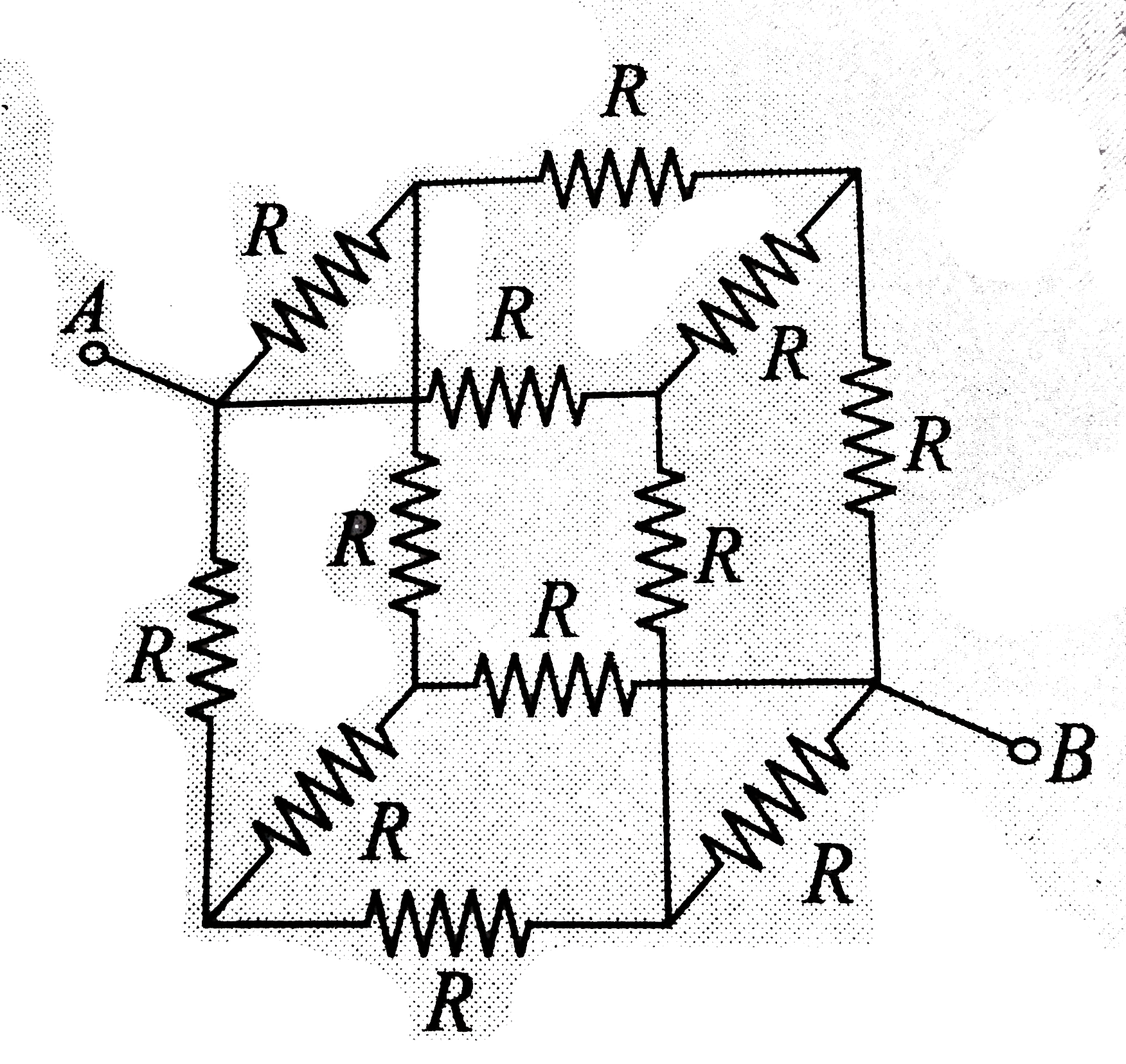 View Solution
View SolutionThe equivalent resistance between X & Y of network shown below, when switch S is closed
View SolutionTwelve identical resistances arranged on all edges of a cube. The resistors are all the same. Then find the equivalent resistance between the edges A and B as shown in figure.
 View Solution
View Solution

